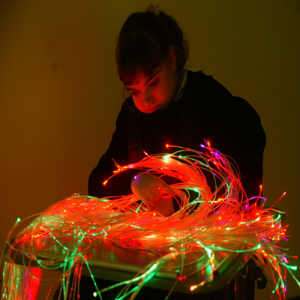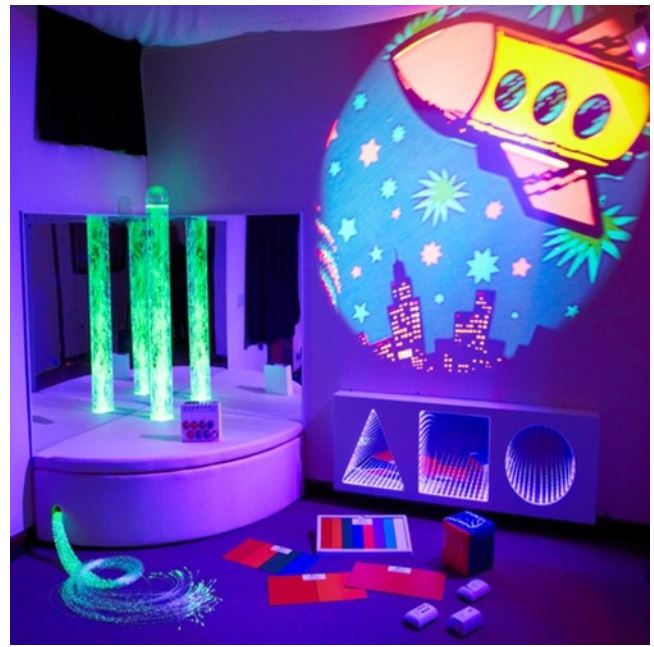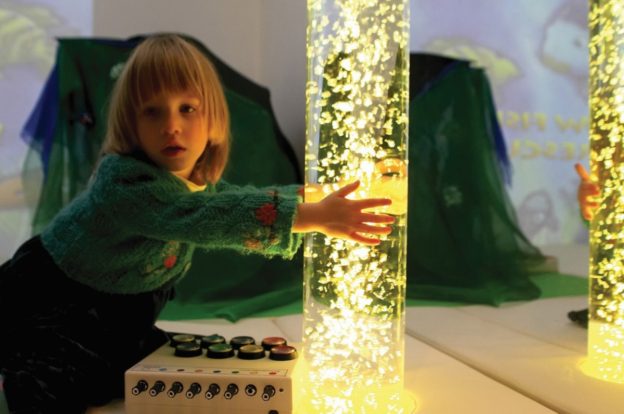We are sensory beings. And the way, quality, and efficiency of perceiving sensory information can directly affect our behavior, motor skills, and self-image. An individual with SPD (sensory processing disorder) can seem as if they are neurotypical one moment and the next moment they can be unresponsive, irritated, or overly-excited. You may witness stimming behavior, rocking, pinching or biting that can impact the way others view them as well.
Sensory Processing Disorder or Sensory Integration Disorder is a disorder of sensory intake. Sense of smell, sight, sound, touch, and taste in addition to the sense of motion and body awareness can be challenged in an individual with a sensory processing disorder. Though there are several types of SPD, the most common is Sensory Modulation Disorder.
Let's take a look at how certain processes are interpreted or misinterpreted and how we can provide tools to assist.

If you can imagine your sensory system as a sponge that absorbs information and also acts as a filter, a sensory over-responder is someone who may absorb too much. Such individuals may appear overly anxious, nervous, and hyper-responsive. And, as with all parts of sensory modulation disorders, they can be overly sensitive in one area. For example, they may be auditorily over-responsive, jumping and startled by certain noises, or visually over-responsive and affected by certain types of lighting. Or, perhaps even the slightest touch or the tag on their shirt may send them "over the edge." An over-responder may soothe themselves in a variety of ways such as stimming or rocking to calm their nervous system. They can even make themselves sick if they don't know what to do with the over-stimulation. But, we can offer them the tools to find their "home base." A soothing blanket, calming pressure, art therapy, exercise, or time spent in a multisensory room can be very soothing and help them achieve balance.

Under-responders are those who seem like they could use a "wake up" call. Their sponge is too thick and doesn't allow enough stimuli to get through. Someone who is visually under-responsive, for example, may not notice the assignment written on the classroom board, or see a stop sign, or remember what they saw. An auditory under-responsive individual may not hear their name being called, and not because of poor hearing, but simply a lack of processing efficiency. Although under-responsive individuals can respond well to using their other senses. So, for example, if they are under-responsive to sound they can use visual cues to help remind them of what they need to do. A multisensory environmentcan awaken and stimulate the senses of an under-responsive individual.

A sensory seeker craves input. It's like their sponge can't get enough. These individuals may
love touch, color, and sound. They can often make those around them a bit jumpy because they tend to grab, run, jump, touch, and even bite. A multisensory environment can feed the cravings of a sensory seeker so they have fewer cravings for over-stimulation. It can also be helpful to provide them with input to an alternative sense. For example, if a child is biting, providing them with a heavy hand or bodywork can reduce the need to bite. Sensory seekers can be highly creative and bright, but they often don't realize the effect that their energy has on everyone around them. Helping them understand how their nervous system ramps up and down and finding the balance is key.

As mentioned, those with SPD may often result in stimming behavior to help calm or even rev up their nervous system. Though stimming is not totally harmful, it can be socially inappropriate at times and affect their self-esteem. Knowledge is key, and offering the right sensory diet and choices before or when stimming occurs can be beneficial. Without drawing too much attention to stimming, gentle suggestions, multisensory experiences, and understanding can go a long way.
Browse our selection of multisensory rooms and products here or contact our friendly team for help.